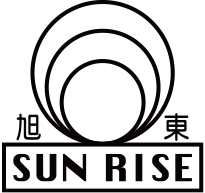- What accessories do you produce?
-
In addition to the extrusion machines, Sun Rise also has injection molding machines. All accessories can be customized.
At present, our fishery accessories include: walkway decks of various sizes, handrails, bird nets, seal nets, buoys, floating rafts, etc. For detailed information, please visit Raft, Buoy and others.
- In which countries do you get your projects set up?
-
In over 51 countries, we have set up fish cages. Please see the list
- Can it withstand typhoons? Was there damage before?
-
Sun Rise fish cage is famous for its resistance to wind and waves. In the past 20 years, it has never had a failure at sea. It has experienced three typhoons in the Philippine Sea within one year without being damaged, thus it has earned its reputation as the only surviving fish cage. Now it has a 100% market share in this sea area and there are approximately 3,000 pcs in total. In addition, it has a record of withstanding waves of 7 meters in the North Sea.
- Is the bracket welded or injection molded?
-
Sun Rise uses one-piece injection molding technology to reduce the risk of manual errors and has the following advantages:
- Strength and consistency: accessories are heated evenly during the process of one-piece injection molding and have no seams or welding joints, resulting in greater strength and better consistency.
- Anti-leakage: since there are no welding joints, they have lower risk of leakage and cracks.
- Production efficiency: one-piece injection molding enables mass production, shorter lead time, and high quality consistency.
- Appearance: the surface of the accessories is smooth and the appearance is neater and more beautiful.
- What's the max. diameter for your fish cage?
-
No restrictions for square type. For round type, regular sizes are from dia.12m to 70m (circumference around 40m to 220m). For more details, please visit Offshore Fish Cage.
- What's the recommended temperature range?
-
When using PE100, the max. operating temperature range of HDPE is -118°C to +120°C, but the recommended temperature range is between -60°C and +60°C.
Sun Rise have projects in hot or icy/snowy areas, including Indonesia, Malaysia, the United Arab Emirates, Saudi Arabia, New Zealand, Chile, Iceland, Norway, Finland, etc.
- Can the shape of fish cage be customized?
-
Fish cages come in a variety of shapes and designs to suit different site conditions. Common shapes are:
Square type:
- Traditional and most common fish cage shape, usually used for small scale or fry cultivation.
- Simple structure, easy to install and maintain, but rarely used in large-scale marine aquaculture.
Round type:
- Round type structure is more stable in waves and currents.
- They usually come in larger sizes and are suitable for large-scale farming, such as Atlantic salmon farming.
Both of the above types can be connected through walkways to form a large farming area. Welcome to contact us for more details.
- Is the fish cage certified?
-
Norway has been engaged in fish cage farming for more than half a century, and they have the world-leading technology in this section. NS 9415 certification is a Norwegian standard for the design, installation and operation of marine aquaculture facilities, especially fish cages. This standard was developed by the Norwegian Standards Association (NS) to ensure the safety and stability of facilities in the marine environment to avoid the risk of facility damage and fish escape. This standard puts forward specific requirements for the design, structural strength, material selection and installation methods of those facilities. The NS 9415 standard covers the following aspects:
Design: it stipulates the design requirements for facilities under different environmental conditions such as wind, waves, tides and sea currents to ensure that they can withstand the challenges of extreme weather and sea conditions.
Material & Structure: materials that are durable and suitable for the marine environment is required, and the stability and safety of the structure are regulated to prevent cage damage and fish escape.
Installation & Operation: the installation methods and operating procedures of the facilities are specified in detail to ensure that they can be installed correctly and operate safely.
Maintenance & Inspection: regular maintenance and inspection procedures for facilities are stipulated in order to detect potential problems in a timely manner and ensure the long-term operation.


